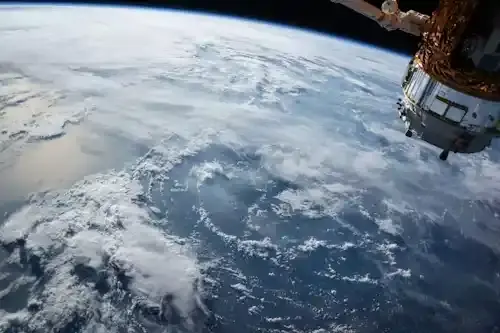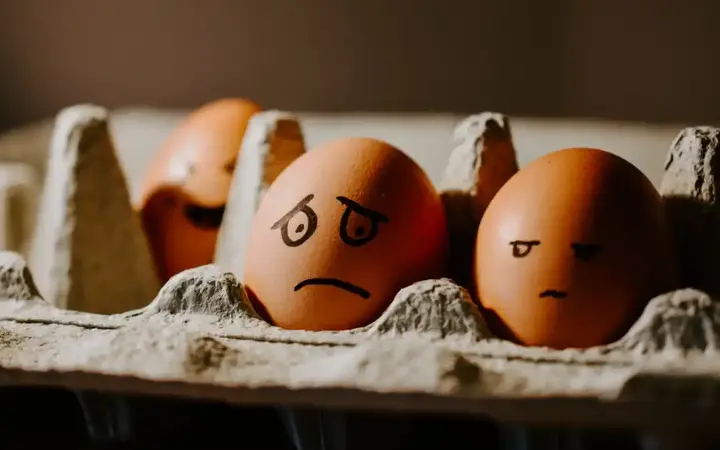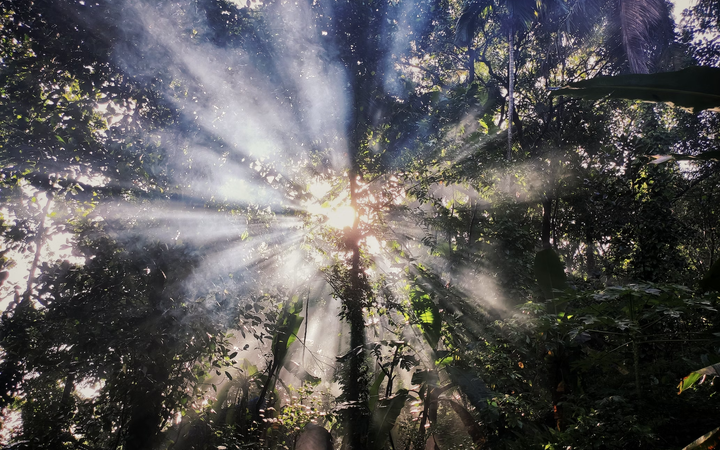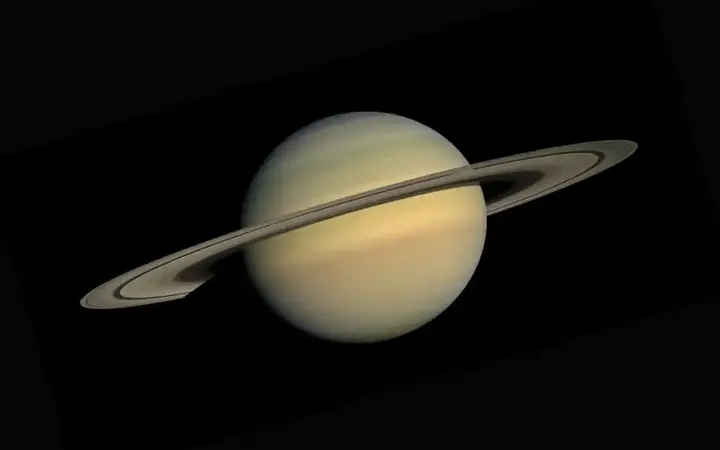Saving our seas: Can we remove plastic pollution?
We found plastic in every corner of the world we looked at, from the North Pole to the South Pole, from the highest points on Earth to the deepest oceans.
Show key points
- Plastic pollution has spread to every part of the globe, including remote locations like the poles, mountaintops, and deep ocean trenches.
- With a recycling rate of just 9% in the U.S., most plastic waste either ends up in nature or accumulates in the environment for centuries.
- Ocean plastics tend to gather in massive vortexes like the Great Pacific Garbage Patch, posing severe threats to marine life through ingestion and entanglement.
- ADVERTISEMENT
- While initiatives like The Ocean Cleanup aim to remove ocean plastic, their reliance on fossil-fuel-powered vessels and risks to marine ecosystems raise environmental concerns.
- Rivers discharge up to
- 41 million tonnes of plastic into oceans annually, with most of the pollution coming from a small number of rivers, mainly in Asia.
- Tiny plastic particles have infiltrated human consumption, with people ingesting nearly 1,800 particles weekly through water and other sources.
- To truly address plastic pollution, the focus must shift from ocean cleanup to reducing single-use plastics and preventing waste at the source.
Since its first use in 1907, plastic has been silently tightening its grip on our planet and all the inhabitants of its ecosystem. Based on a 2017 study published in the journal Science Advances, about one-third of plastic waste is disposed of in nature, and only 9% of it is recycled in the United States. About 75 percent of the plastic is discarded, equivalent to 4,900 metric tons of plastic, or 11 Boeing 747-8 passenger aircraft.
For all plastics, they end up harming the environment as they are released or discarded; animals get stuck or end up consuming them. Since plastic does not degrade, it will remain in the environment for decades, if not centuries. One solution is to remove larger pieces of plastic, such as water bottles and plastic bags, from natural spaces. This is easy to do on the floor, where we can simply walk and pick up the piece of plastic.
Recommend
But what about the 75 to 199 million tons of plastics already in the oceans?
The amount of plastic in our oceans
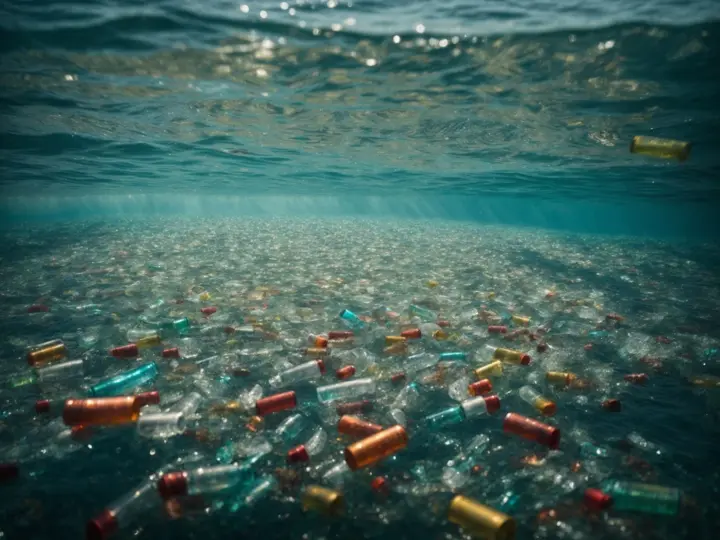
Plastic is everywhere in our oceans, but most of it is concentrated in spots due to rotating ocean currents (vortices). There are five such whirlpools and garbage spots, the most famous of which is the Great Rubbish Patch in the Pacific, which covers an area of 1.6 million square kilometers.
Other areas include one in the Indian Ocean, two in the Atlantic and one in the Pacific.
Each spiral has garbage stains of different sizes.
The floating plastics in these patches will continue to spread until they break down into smaller pieces, making them harder to clean. Plastic bags are often confused with jellyfish, a favorite food for loggerhead sea turtles. Albatrosses feed the chicks plastic resin granules because they see the pellets as fish eggs. In the end the chicks starve to death or suffer organ rupture.
Research shows that most of the plastic waste that rises into the swirls and the Great Rubbish Patch in the Pacific is decades old, but it turns out that the newly produced plastic is still closer to the coasts. This suggests that one of the best ways to deal with plastics in the oceans may be through beach cleaning.
Perimeter cleaning

The goal of The Ocean Cleanup is to remove 90% of the plastic waste floating in the ocean and make the Great Pacific Garbage Patch "garbage free".
The latest and most effective cleaning technology, System-002, consists of a grid-like floating barrier three meters deep and forms a capital U. The system in question is paid for by Maersk vessels.
However, what is overlooked is that the large vessels used to pull the assembly network have a significant carbon footprint. Pulling nets across ocean waters with huge fossil-fuel ships increases air and climate pollution. In their EIA report, we can see under Section 5.0 that the two vessels operated by The Ocean Cleanup release 600 metric tons of CO2 per month from cleanup, which equates to more than a hundred cars on the road for a full year.
There is also the problem of bycatch (trapping marine animals while collecting plastic). It is difficult to get floating plastics out of the water without entanglement of fish, turtles and other marine wildlife. Even when they are thrown back into the water, these creatures usually die. Organisms that entangle in fishing nets have a poor ability to find food and evade predators. Even if the organism does not actually die, injuries, restrictions on movement, and a decrease in its ability to search for food will seriously harm the animal.
Scientists have expressed concern about the effects this passive aggregation technique might have on Newstone, a species of organism that lives on the surface of the Pacific Ocean (this research was funded by The Ocean Cleanup).
Snails, crabs, sea dragons and jellyfish are part of this ecosystem. These creatures are often found alive on the surface of plastic waste. As an integral part of the food web, Newstone creates important ecological connections between different oceanic communities. For example, Newstone serves as a nursery for small fish species, such as Atlantic cod and salmon, and is the main food source for endangered species such as loggerhead turtles.
River plastic pollution
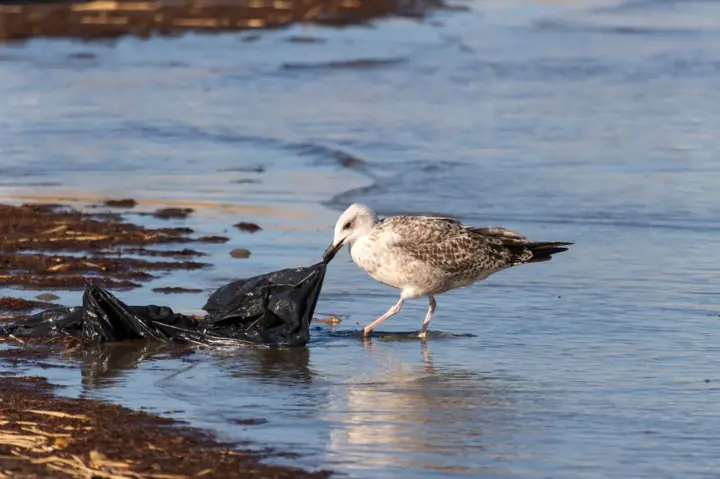
According to a 2017 study, the global river system currently discharges between 1.15 and 2.41 million tonnes of plastic into the oceans annually. Most of the twenty most polluting rivers are located in Asia, affecting 21% of the world's population and more than two-thirds (67%) of annual global inputs. In addition, more than 90% of plastic inputs come from 122 polluted rivers, of which 103 are in Asia, eight in Africa, eight in South and Central America, and one in Europe.
From rivers to our drinking cups, plastic has made its way into our bowels. Drinking water, including bottled water and tap water, is the most important contributor to plastics in the human diet, with the average person ingesting about 1,769 tiny plastic particles each week, based on a 2019 report supported by the World Wide Fund for Nature (WWF).
To reduce this source of marine plastic pollution, the Ocean Cleanup has additionally deployed solar-powered vessels called interceptors at plastic-polluted estuaries. The garbage is collected by a barrier during the flow of water, transported to a conveyor belt, and then dumped into a shuttle, which transports the garbage to the waste management facility. Eight interceptors have already removed more than 2.2 million pounds of plastic from rivers in the Dominican Republic, Jamaica, Vietnam, Indonesia and Malaysia.
As of October 2023, we have no data on the effects of this approach.
Conclusion

The strategy of cleaning up the oceans is new, but the ironic damage it causes to the environment is not something to ignore. The best way to extract plastic from the oceans is to "not focus on the shelf part," but rather focus on the original source of plastic.
Today's waste disposal culture encourages the use of single-use plastic. Of the 300 million tonnes of plastic produced each year worldwide, half is for single-use items. Cans, water bottles, food bowls, and anything else you use once and get rid of are a big part of the problem. Identifying the root of this problem is the most effective way to solve it without allowing it to fester beyond our control, to the point where cleanup efforts become futile.
![]()
Due to lack of funding, old NASA may be on an unsustainable path
Underfunded, aging NASA may be on unsustainable path more- ADVERTISEMENT
![]()
Proven ways to build your confidence
Self-confidence isn't about being perfect—it's about knowing your strengths, embracing your flaws, and growing through experience. Celebrate small wins, speak kindly to yourself, and keep learning. With each step forward, you’ll prove to yourself that you are capable and ready for life’s challenges. more- ADVERTISEMENT
![]()
What makes the global demand for Arabic grow?
Arabic is booming globally, reflecting pride, rich culture, and growing global influence. With rising demand in business, media, internet, and diplomacy, Arabic is becoming essential in today’s world, offering vast opportunities for communication, jobs, and cultural exchange. more- ADVERTISEMENT
![]()
Turkey: The country that heals hearts and steals souls
From Istanbul’s magic to Cappadocia’s dreamy skies, Turkey stirs the soul with ancient wonders, warm-hearted people, and unforgettable beauty. More than a destination, it's a journey through time and emotion that stays with you long after you’ve gone. more- ADVERTISEMENT
![]()
Success Guide - How to tame anxiety, stress and work stress?
Feeling overwhelmed by anxiety, stress, or work pressure? This simple guide offers practical steps like deep breathing, walking, quality sleep, setting boundaries, and staying organized to help you cope and regain balance. Remember, small changes can make a big difference—and you're not alone. more- ADVERTISEMENT
![]()
Explore your nature lighting show: Tyndal the effect of weather phenomena
The Tyndall effect turns light and air into a stunning dance of color and mystery. From golden rays to misty glows, nature paints breathtaking scenes that captivate the eye and soul—and it’s all thanks to tiny particles playing with light in extraordinary ways. more- ADVERTISEMENT
![]()
LI-FI: where the Internet travels at the speed of light
LI-FI, created in 2011 by Prof. Harald Haas in Scotland, uses light instead of radio waves for data transfer. It offers ultra-fast speed and strong security, making it ideal for sensitive environments. Despite its promise, challenges like high costs and dependency on constant lighting limit its widespread use. more- ADVERTISEMENT
![]()
Rare but deadly natural phenomena: a fascinating look at the extraordinary forces of the Earth
Nature stuns with rare spectacles like ghost apples clinging to branches, red rain falling mysteriously in India, and jellyfish lightning flashing above storms. From Venezuela’s eternal lightning storms to Australia’s rolling morning glory clouds, these phenomena showcase Earth’s strange, powerful beauty—and remind us how little we really know. more- ADVERTISEMENT
![]()
Belgrade, Serbia: Europe's new food capital?
Belgrade is now a buzzing foodie hotspot where creative chefs like Vanya Pushkar and Filip Seric reinvent traditional Serbian dishes with fresh flair. From smoked duck with herbs to grilled belly with currant sauce, the city's modern cuisine celebrates rich local flavors in vibrant, stylish settings. more- ADVERTISEMENT
![]()
The most fascinating discoveries we have made to explore Jupiter
Jupiter’s Great Red Spot, a massive storm lasting centuries, and the mysterious, possibly liquid core make it a planet full of extremes. Its moons—especially Europa with its hidden ocean—offer exciting clues about extraterrestrial life. With Juno and upcoming missions, the future of exploring this gas giant looks thrilling. more- ADVERTISEMENT












